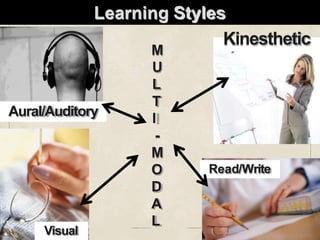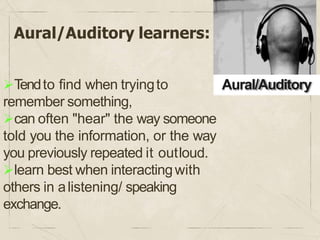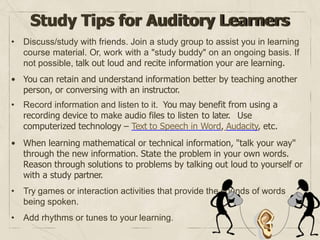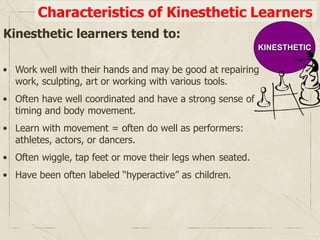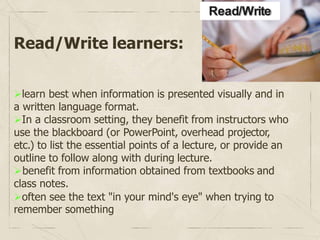The document discusses various learning styles—visual, aural/auditory, kinesthetic, and read/write—highlighting their characteristics, preferences, and effective study tips for each style. It emphasizes that people often have a preferred learning style which can be adapted for better learning outcomes, and that multiple modalities can enhance understanding. Additionally, individuals who prefer multi-modal learning often require inputs from various styles to achieve a comprehensive grasp of material.
